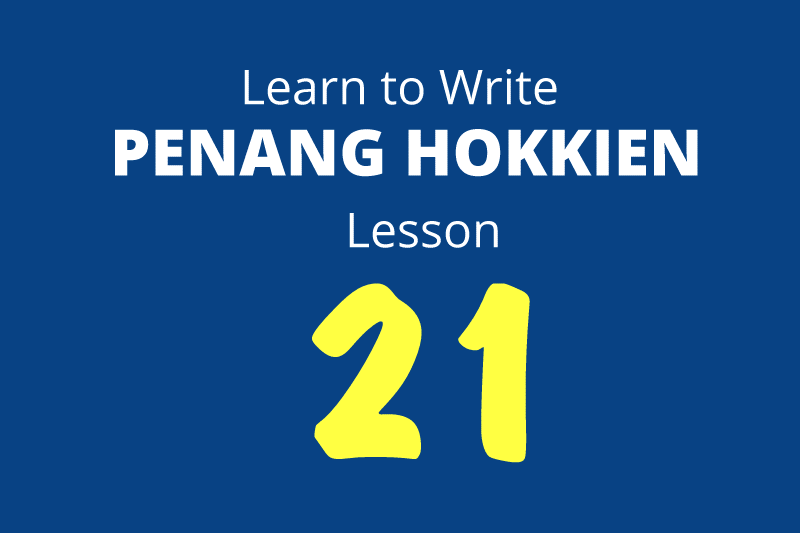
In our previous lesson, we learned the linking verb si33. Previously, we have also learned the possessive adjective/pronoun "-eh2". In this lesson, we learn the possesion/existential verb uh33
 . Essentially, uh33 acts in a similar way to -eh2, in that it shows possession. However, unlike -eh2, it creates a predicate denoting possession.
. Essentially, uh33 acts in a similar way to -eh2, in that it shows possession. However, unlike -eh2, it creates a predicate denoting possession.I have money.
Wah1 uh33 lui1.

He has car.
Ie1 uh33 chia1.

They have children.
Ie1lang2 uh33 knia4.

We also use uh33 to create existential clauses (that's sentences in English that start with "There is/are" or those with the gerund "Having").
There is money on the table.
Uh33 lui1 ti1 tok1teng4.

There are many cars on the road.
Uh33 ce33 chia1 ti1 kae33lor33.

Having children is very good.
Uh33 knia4 cin3 ho4.

The opposite of uh33 is boh2
 . It sandhis when placed in front of an object.
. It sandhis when placed in front of an object.I don't have money.
Wah1 boh3 lui1.

He doesn't have car.
Ie1 boh3 chia1.

They don't have children.
Ie1lang2 boh3 knia4.

In negative existential clauses, replace uh33 with boh2.
There isn't any money on the table.
Boh3 lui1 ti1 tok1teng4.

There aren't many cars on the road.
Boh3 ce33 chia1 ti1 kae33lor33.

Not having any children is also good.
Boh3 knia4 pun1 ho4.

To form questions on possession, use boh2 as a particle at the end of the sentence.
Do you have money?
Lu4 uh33 lui1 boh2?

Does he have car?
Ie1 uh33 chia1 boh2?

Do they have children?
Ie1lang2 uh33 knia4 boh2?

Is there any money on the table?
Uh33 lui1 ti1 tok1teng4 boh2?

Are there many cars on the road?
Uh33 ce33 chia1 ti1 kae33lor33 boh2?

Is it good to have children?
Uh33 knia4 ho4 boh2?

To form negative questions on possession, replace uh33 with boh2, and replace boh2 at the end of the sentence with nia2 (or with other interrogative particles such as ah3). Both particles are used in such questions to reconfirm what the person who asks believes to be true.
Don't you have money?/You don't have money, do you?
Lu1 boh3 lui1 nia2?

Doesn't he have car?/He doesn't have car, does he?
Ie1 boh3 chia1 nia2?

Don't they have children?/They don't have children, do they?
Ie1lang2 boh3 knia4 ah3?
 There isn't any money on the table, is there?
There isn't any money on the table, is there?Boh3 lui1 ti1 tok1teng4 ah3?

There aren't many cars on the road, are there?
Boh3 ce33 chia1 ti1 kae33lor33 nia2?

Not having children is also good, isn't it?
Boh3 knia4 pun1 ho4 nia2?

Previous Lesson | Main Page | Next Lesson
Language Learning Tools
Use the following language learning tools to learn Penang Hokkien!Learn Penang Hokkien with uTalk
This app opens the door to over 150 languages.Return to Penang Hokkien Resources

Copyright © 2003-2025 Timothy Tye. All Rights Reserved.

 Go Back
Go Back
